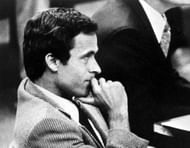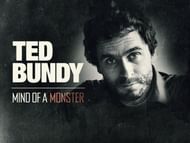Mind of a Monster turns to taped audio and first-person accounts to lay out Ted Bundy’s methods and claims. The episode centers on what the killer said about himself and what investigators, families, and survivors described, keeping the focus on verifiable case details.
The special re-aired Monday, October 6, on Investigation Discovery. Viewers heard archival recordings alongside interviews that set the timeline and outcomes in plain terms.
How Mind of a Monster uses the audio archives
The program builds context before it plays the most disturbing clips. It sets Bundy’s public face next to the taped monologues where he spoke about luring victims, moving them to secondary sites, and hiding evidence. According to Britannica, Bundy later confessed to 30 murders and was executed in Florida in 1989, facts that the episode places near the start to anchor the story.
Producers then layer in comments from detectives who worked the cases. The tapes are presented as material that reportedly shows how he described control, staging, and the hunt, while investigators explain what evidence actually tied him to specific crimes. People magazine reported that law enforcement long suspected a higher total than the 30 he admitted before his death-row interviews ended.
Gruesome facts in the Mind of a Monster audio archives
What stands out in the audio is the way Ted Bundy described approach patterns. He talked about posing as injured or as an authority figure to gain trust, then using a vehicle as a trap. Those elements match long-published case summaries and trial exhibits.
 Ted Bundy in court (Image via Wikimedia Commons)
Ted Bundy in court (Image via Wikimedia Commons)The tapes also reference graphic post-crime behavior. Necrophilia is alleged in multiple late interviews and has been cited in prior reporting tied to death-row confessions. People magazine reported that FBI agent Bill Hagmaier said Ted Bundy discussed returning to scenes and defiling remains in his last days.
The program reminds viewers that Bundy’s recorded statements shifted. In some sessions, he spoke in the third person, which makes parts of the audio self-serving. NBC News noted a similar pattern in other Bundy releases built around tapes, where he narrated “as if” about a killer to avoid a direct confession. The Investigation Discovery edit keeps those qualifiers visible so viewers can tell where the audio strays into speculation.
Also read: Ted Bundy's brutal crimes: How many lives did the notorious serial killer take?
What Mind of a Monster adds to the record
Beyond the audio, the Mind of a Monster episode restates the core timeline: the murders occurred between 1974 and 1978 across Washington, Oregon, Utah, Colorado, Idaho, and Florida; Ted Bundy was arrested in 1975 and 1978, escaped twice in 1977, and was convicted in Florida in 1979–1980. According to Britannica, he was sentenced to death for multiple murders and died in the electric chair in 1989.
 Mind of a Monster: Ted Bundy (Image via HBO)
Mind of a Monster: Ted Bundy (Image via HBO)Execution details also appear to mark the end of the case. UPI reported his last words to family and the official time of death. The episode uses those facts to close the loop on the tape-era statements and the formal outcomes.
Mind of a Monster season 1, episode 1 Ted Bundy is available to stream on HBO Max, Discovery+, YouTube TV, Philo, and Investigation Discovery. The episode can also be digitally purchased on Amazon Video, Apple TV, and Fandango At Home. It is also available to stream for free on Spectrum On Demand.
Why did you not like this content?
- Clickbait / Misleading
- Factually Incorrect
- Hateful or Abusive
- Baseless Opinion
- Too Many Ads
- Other
Was this article helpful?
Thank You for feedback
About the author
Edited by Preethika Vijayakumar

.jpg) 2 hours ago
3
2 hours ago
3

 English (US)
English (US)